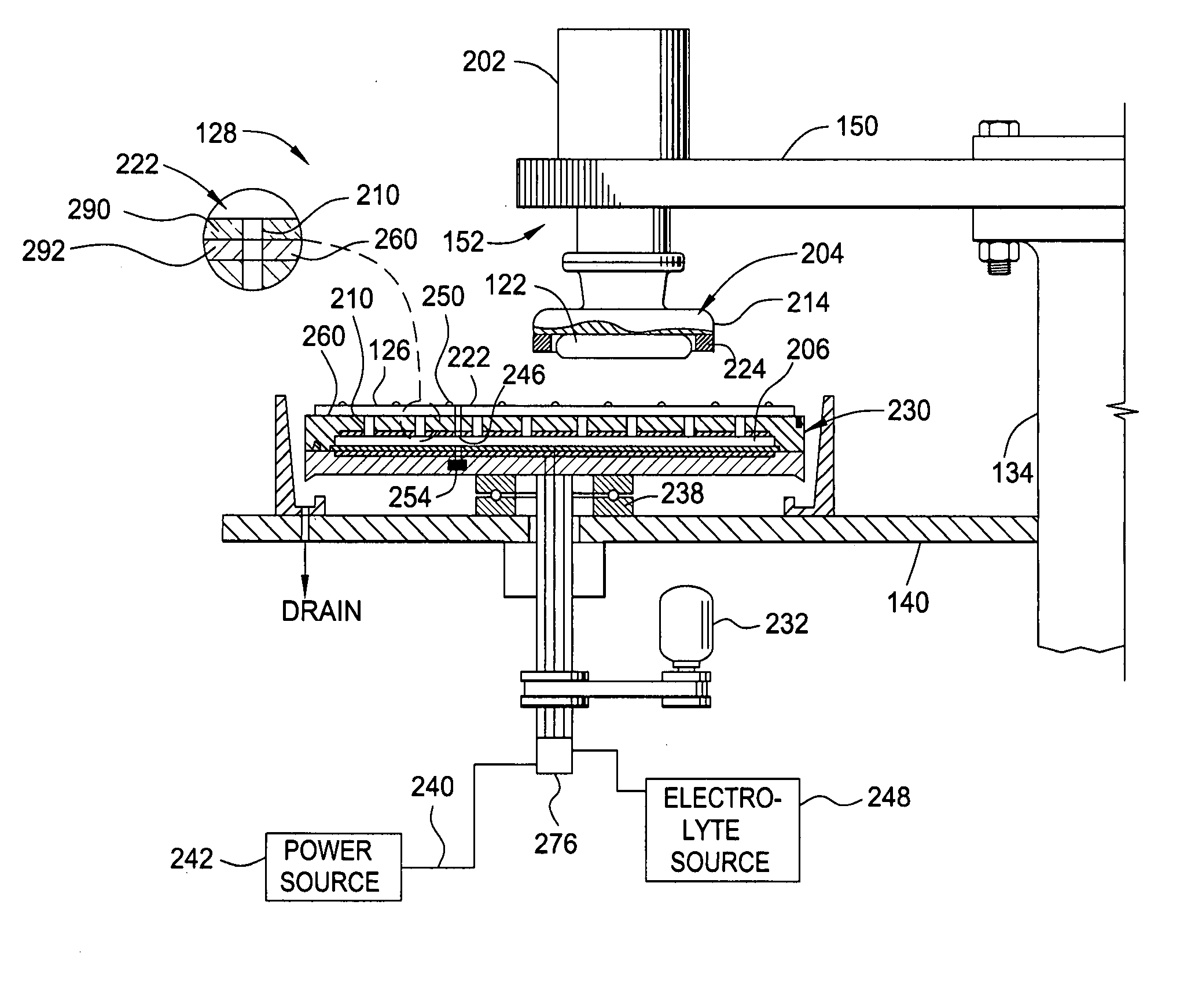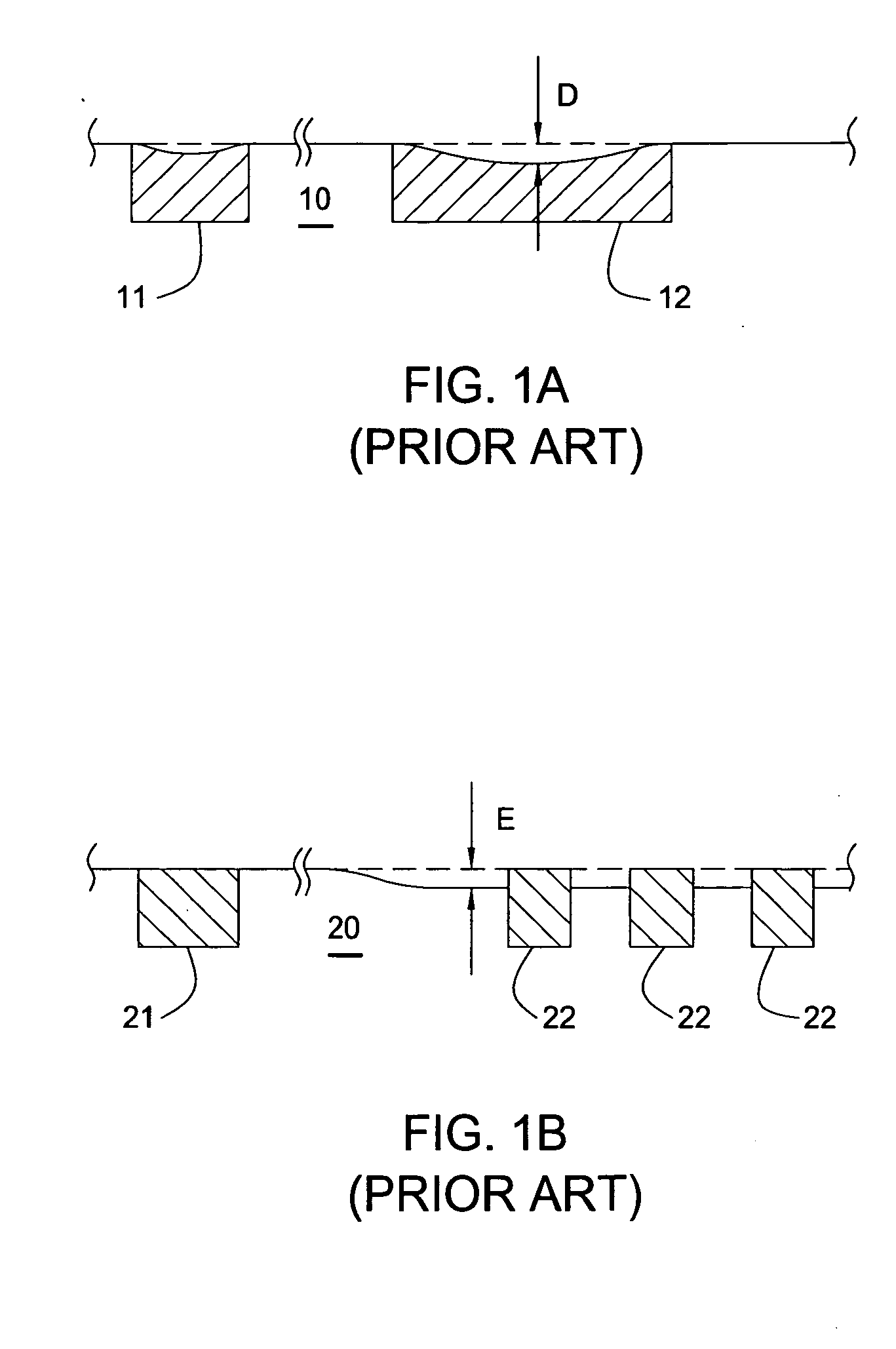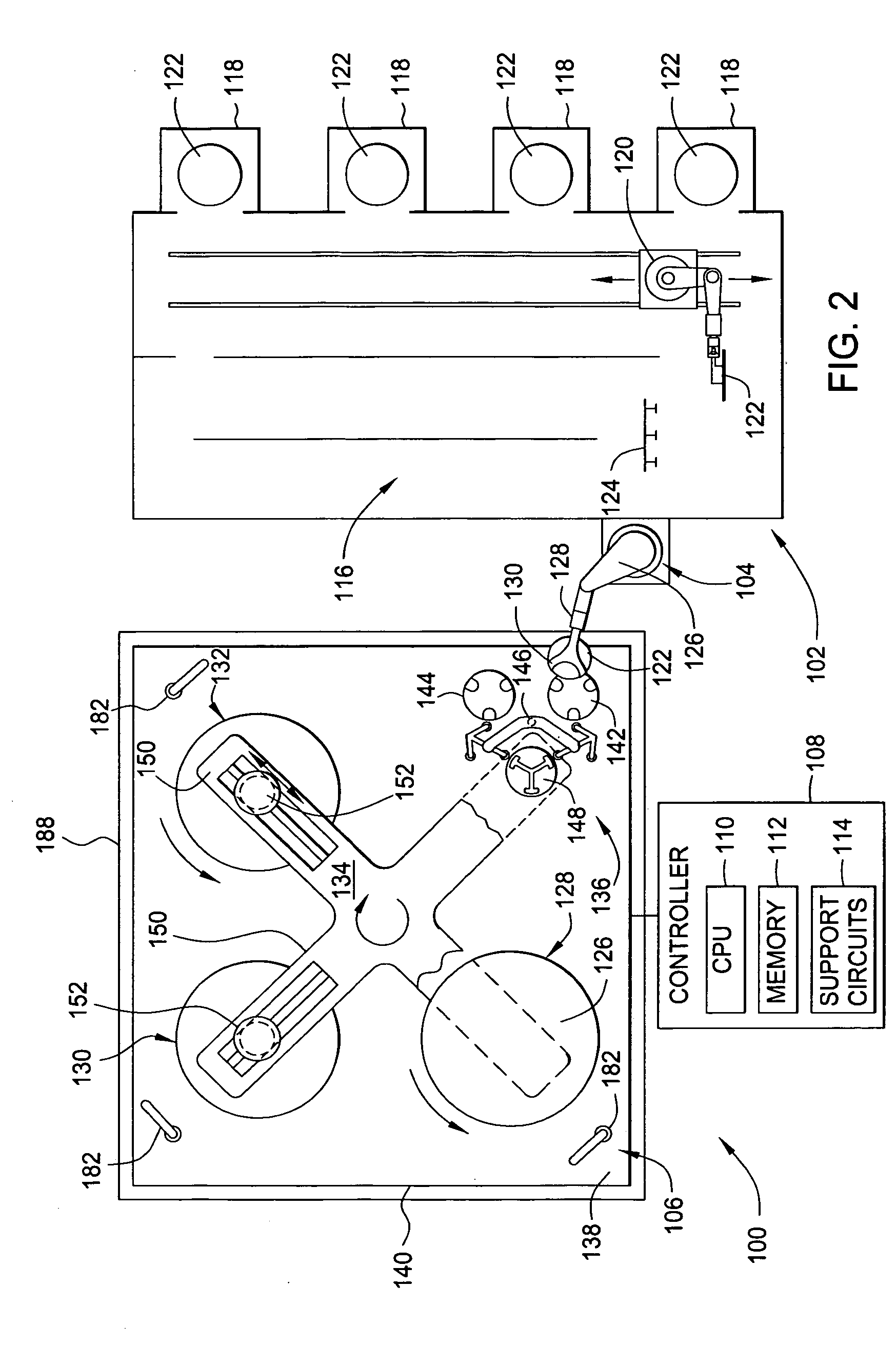Process and composition for conductive material removal by electrochemical mechanical polishing
a technology of electrochemical mechanical polishing and conductive materials, which is applied in the direction of electrolysis components, chemistry apparatus and processes, manufacturing tools, etc., can solve the problems of insufficient planarization of the copper surface, topographical defects, and one or more concave depressions
- Summary
- Abstract
- Description
- Claims
- Application Information
AI Technical Summary
Problems solved by technology
Method used
Image
Examples
example 1
[0204] A copper plated substrate with 300 mm diameter was polished and planarized using the following polishing composition within a modified cell on a REFLEXION® system, available from Applied Materials, Inc. of Santa Clara, Calif. A substrate having a copper layer of about 11,500 Å thick on the substrate surface with a step height of about 6,000 Å was placed onto the first platen and exposed to a polishing composition of: [0205] about 6% by volume phosphoric acid (85% aqueous solution);
[0206] about 2% by volume ethylenediamine;
[0207] about 2% by weight ammonium citrate;
[0208] about 0.3% by weight benzotriazole;
[0209] between about 2% and about 6% by volume 40% KOH solution to provide a pH of about 5;
[0210] about 1.5% by volume of hydrogen peroxide (30% aqueous solution, for about 0.45 vol % hydrogen peroxide);
[0211] about 0.15% by weight of silica (SiO2) abrasive particles; and
[0212] de-ionized water.
[0213] The substrate was contacted with the first polishing article at a ...
example 2
[0223] A copper plated substrate with 300 mm diameter was polished and planarized using the following polishing composition within a modified cell on a REFLEXION® system, available from Applied Materials, Inc. of Santa Clara, Calif. A substrate having a copper layer of about 11,500 Å thick on the substrate surface with a step height of about 6,000 Å was placed onto the first platen and exposed to a polishing composition of:
[0224] about 6% by volume phosphoric acid (85% aqueous solution);
[0225] about 2% by volume ethylenediamine;
[0226] about 2% by weight ammonium citrate;
[0227] about 0.3% by weight benzotriazole;
[0228] between about 2% and about 6% by volume 40% KOH solution to provide a pH of about 5;
[0229] about 1.5% by volume of hydrogen peroxide (30% aqueous solution, for about 0.45 vol % hydrogen peroxide);
[0230] about 0.15% by weight of silica (SiO2) abrasive particles; and
[0231] de-ionized water.
[0232] The substrate was contacted with the first polishing article at a ...
example 3
[0242] A copper plated substrate with 300 mm diameter was polished and planarized using the following polishing composition within a modified cell on a REFLEXION® system, available from Applied Materials, Inc. of Santa Clara, Calif. A substrate having a copper layer of about 11,500 Å thick on the substrate surface with a step height of about 6,000 Å was placed onto the first platen and exposed to a polishing composition of:
[0243] about 6% by volume phosphoric acid (85% aqueous solution);
[0244] about 2% by volume ethylenediamine;
[0245] about 2% by weight ammonium citrate;
[0246] about 0.3% by weight benzotriazole;
[0247] between about 2% and about 6% by volume 40% KOH solution to provide a pH of about 5;
[0248] about 1.5% by volume of hydrogen peroxide (30% aqueous solution, for about 0.45 vol % hydrogen peroxide);
[0249] about 0.15% by weight of silica (SiO2) abrasive particles; and
[0250] de-ionized water.
[0251] The substrate was contacted with the first polishing article at a ...
PUM
| Property | Measurement | Unit |
|---|---|---|
| conductivity | aaaaa | aaaaa |
| conductivity | aaaaa | aaaaa |
| pressure | aaaaa | aaaaa |
Abstract
Description
Claims
Application Information
 Login to View More
Login to View More - R&D
- Intellectual Property
- Life Sciences
- Materials
- Tech Scout
- Unparalleled Data Quality
- Higher Quality Content
- 60% Fewer Hallucinations
Browse by: Latest US Patents, China's latest patents, Technical Efficacy Thesaurus, Application Domain, Technology Topic, Popular Technical Reports.
© 2025 PatSnap. All rights reserved.Legal|Privacy policy|Modern Slavery Act Transparency Statement|Sitemap|About US| Contact US: help@patsnap.com



